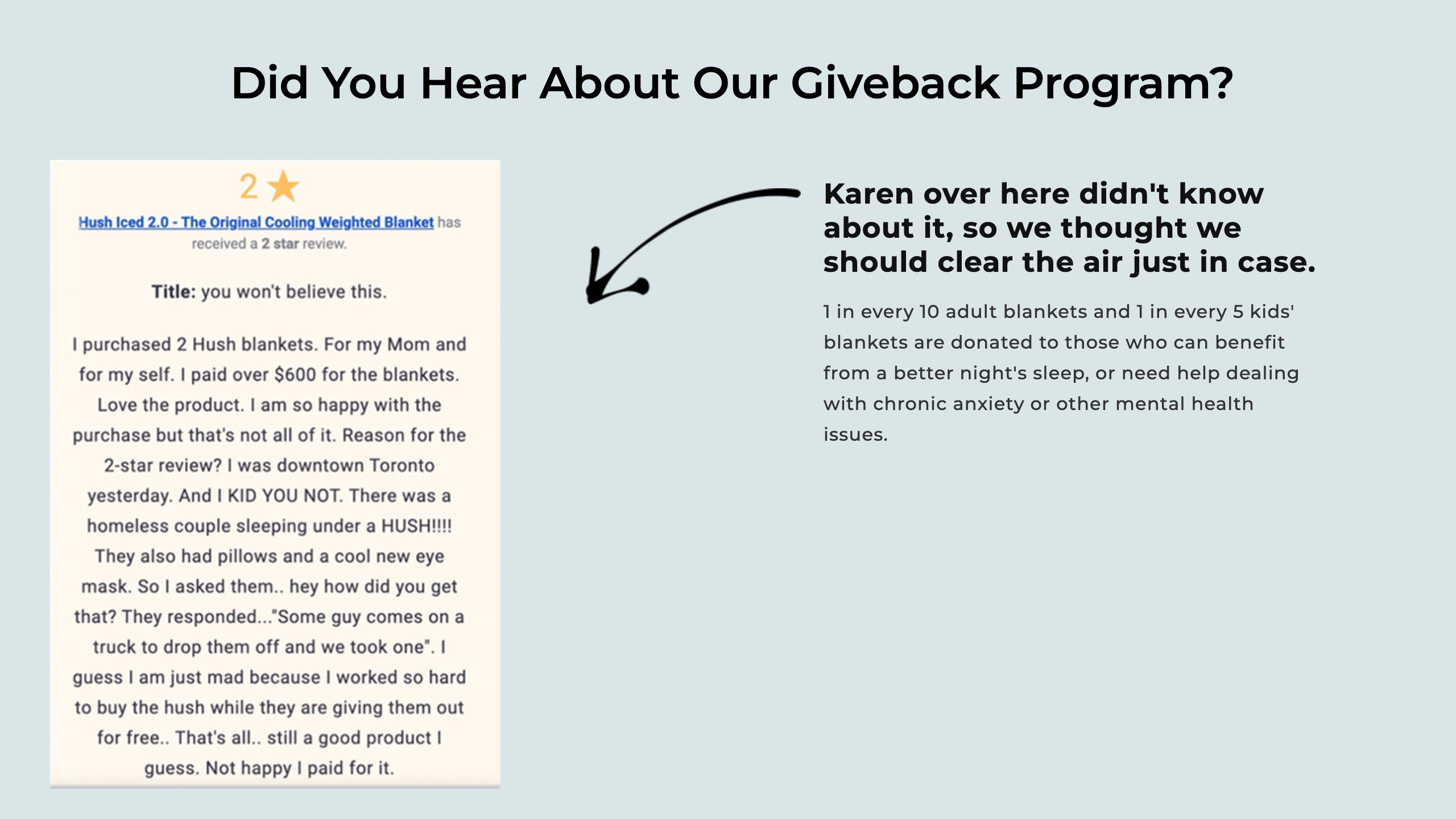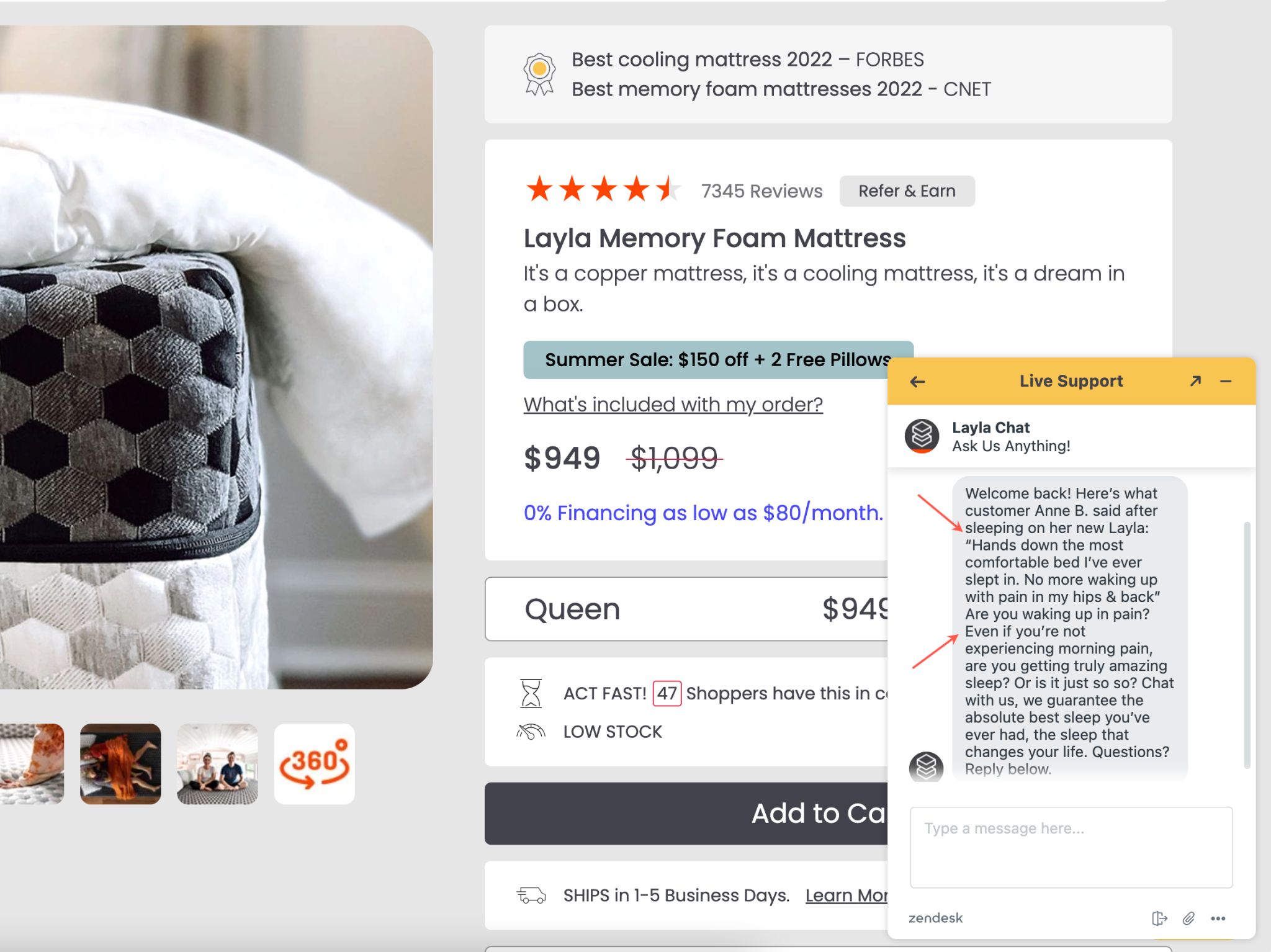Blog
eCommerce Social Proof– Totally Different Approach
What is social proof in eCommerce?
Shoppers rely on social proof because they want to reduce the uncertainty of a purchase by seeing what other buyers think.
They want to rely on what other shoppers think because they are looking for unbiased opinions and they know they will not get that from the brand– that is in the business of selling this item.
The biggest mistake brands make with social proof is that they turn on customer reviews and mark the social proof project as done.
Social proof needs to permeate your entire sales pitch. It shouldn’t just it for people who are seeking it– you should incentivize all visitors to engage with it.
What are examples of social proof in marketing?
Here are some different ways to think about social proof.
1: Showing a negative review upfront (proactively) and using that to make a point:

2: 54.7% of consumers read at least four reviews before buying a product. (Source). So if we can get a visitor who would normally read just two reviews to read 5 that would increase the likelihood of them buying. Here’s one way to do it:

This retailer hides reviews by default. When you scroll to the section you’ll see an overlay message with the text: please read at least 10 reviews.
Seeing this message may not get someone to read 10 reviews but they might read 4 when they previously were going to read 2. This is a form of priming.
3: Here is a clever way to use social proof at a location outside of the traditional reviews section. I was revisiting a mattress site and a chat prompt appeared and showed a review of a person who had purchased this item. This is a great way to start a conversation:

Revealing It All
We hope you liked this eCommerce social proof article but we have so much more to share with you.
Why Listen to Us?
We’ve spent the last 14 years in our marketing lab 🧑🔬 🧪, experimenting on online shoppers. We’ve learned a crap ton and are ready to share those learning.
We want more marketers and CEOs to know about it.
Eventually, we’ll make this into a book. If you want an unfair advantage over competitors now is the time to steal our ideas because once they are published the cat will be out of the bag.
Each chapter in our forthcoming book will feed into the next. Click the link that best describes where you want to start the story:
Chapter 1: is all about conversation rate optimization (CRO). It talks about the history of CRO, statistics of CRO, and describes how most agencies do CRO. We need to describe how most are doing it before revealing our process (that’s the topic of Chapter 4.)
Chapter 2: For every 1,000 product pitches encountered the shopper buys 1️⃣ item (and we’re being generous). If the goal is to have the consumer choose your product we need to understand their selection criteria– we need to understand their buyer psychology. Marketers who nail this will always outrun their peers.
Chapter 3: Conversion optimization work typically focuses on design and layout changes. We don’t limit ourselves to design and layout. Through extensive experimentation, we realized that the thing that moves the conversion needle 🧭 are the words and ideas expressed on the page. Conversion copywriting is where it’s at.
Chapter 4: Marketers make a fatal mistake. They focus on optimizing the whole site. We focus on the tip of the spear. The most important page on your entire site is your product page. To understand why this is, read this post: Product Page Optimization.



